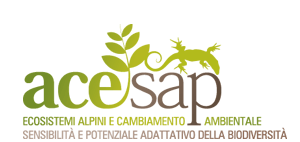BIBLIOGRAFIA |
| CAGNACCI F., BOLZONI L., ROSÀ R., CARPI G., HAUFFE H.C., VALENT M., TAGLIAPIETRA V., KAZIMIROVA M., KOCI J., STANKO M., LUKAN M. HENTTONEN H., RIZZOLI A. |
| 2012 |
| Effect of deer density on tick infestation of rodents and TBE hazard. Part I: empirical assessment. |
| INT.J.FOR PARASITOLOGY |
| AUSTRALIAN SOCIETY FOR PARASITOLOGY INC. PUBLISHED BY ELSEVIER 2012. |
| 42(4):365-372 |
| ZOOLOGIA |
| Tick borne encephalitis (TBE) is endemic to eastern and central Europe with broad temporal and spatial variation in infection risk. Although many studies have focused on understanding the environmental and socio-economic factors affecting exposure of humans to TBE, comparatively little research has been devoted to assessing the underlying ecological mechanisms of TBE occurrence in enzootic cycles, and therefore TBE hazard. The aim of this study was to evaluate the effect of the main ungulate tick hosts on the pattern of tick infestation in rodents and TBE occurrence in rodents and questing adult ticks. In this empirical study, we considered three areas where endemic human TBE occurs and three control sites having no reported human TBE cases. In these six sites located in Italy and Slovakia, we assessed deer density using the pellet group count-plot sampling technique, collected questing ticks, live-trapped rodents (primarily Apodemus flavicollis and Myodes glareolus) and counted ticks feeding on rodents. Both rodents and questing ticks were screened for TBE infection. TBE infection in ticks and rodents was positively associated with the number of co-feeding ticks on rodents and negatively correlated with deer density. We hypothesise that the negative relationship between deer density and TBE occurrence on a local scale (defined by the minimum overlapping area of host species) could be attributed to deer (incompetent hosts) diverting questing ticks from rodents (competent hosts), know as the 'dilution effect hypothesis'. We observed that, after an initial increase, the number of ticks feeding on rodents reached a peak for an intermediate value of estimated deer density and then decreased. Therefore, while at a regional scale, tick host availability has already been shown to be directly correlated with TBE distribution, our results suggest that the interactions between deer, rodents and ticks are much more complex on a local scale, supporting the possibility of a dilution effect for TBE. |






